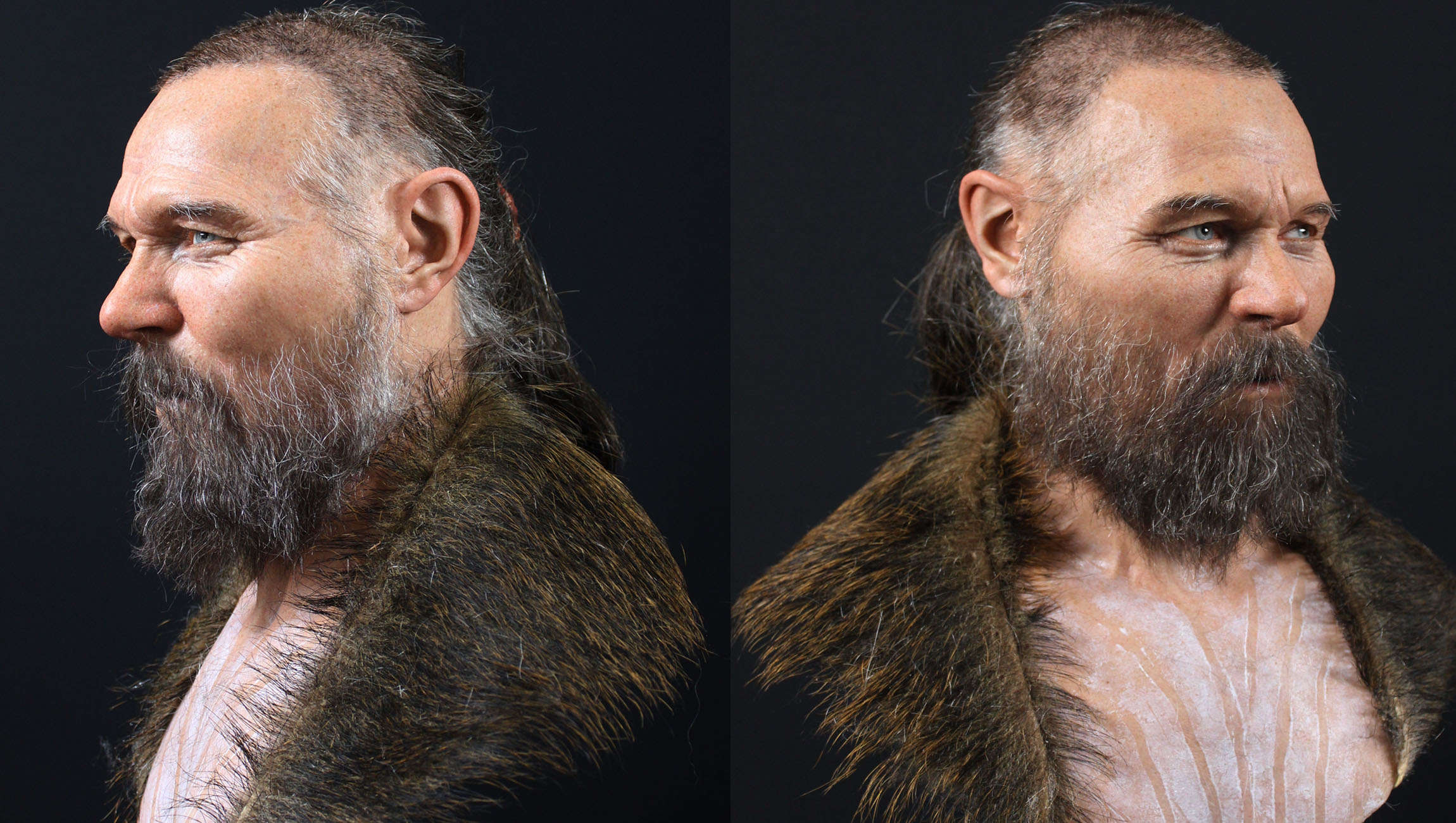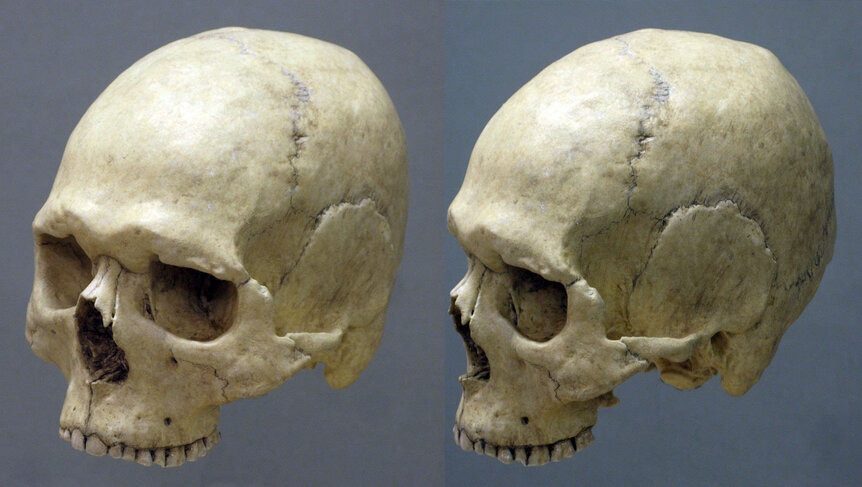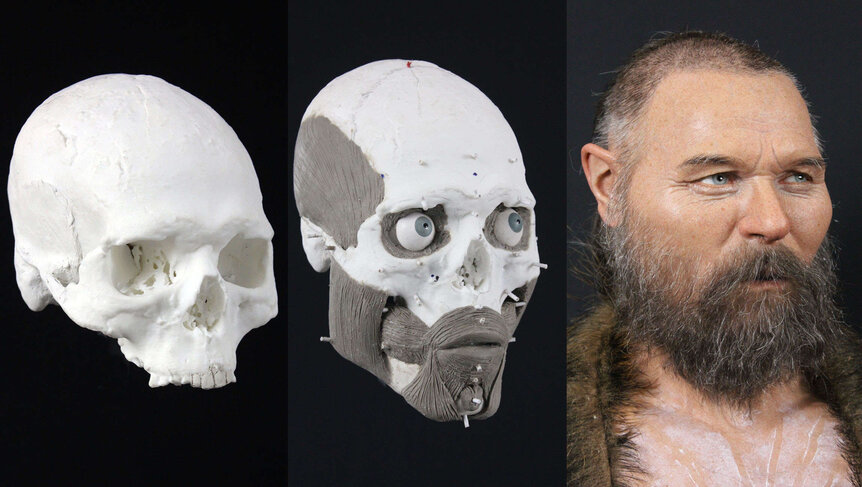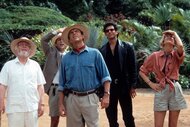Create a free profile to get unlimited access to exclusive videos, sweepstakes, and more!
Stone Age man’s face reconstructed 8,000 years after his head was mounted on a pike

How do you give a face back to someone who has remained faceless for thousands of years?
This is what Oscar Nilsson lives and breathes. Several years ago, Nilsson was approached by archaeologists seeking a facial reconstruction of a Mesolithic skull found in Motala, Sweden. It exhibited signs of antemortem blunt-force trauma and was also missing its jawbone. This skull had been with other disarticulated human crania found intentionally placed at the bottom of a lake, with remains of wooden pikes that were found in some of them (this suggested the mounting). Nilsson managed a facial reconstruction so eerily lifelike that it seems as if you are staring backwards through time into the eyes of someone who lived 8,000 years ago.
To accomplish such a heady task, Nilsson tells SYFY WIRE he needs “as much information [as] possible from the osteologists and the archaeologists that have been working with the finding. ... The individuals´ age, gender, ethnicity and weight is of great importance as I reconstruct a face. Any diseases, traumas and anomalies as well of course. DNA, if well preserved, can also bring vital and astonishing info to my projects: colors of hair, eyes and skin.”
Unlike that infamous scene from Game of Thrones, it also seemed that the skull was disarticulated and mounted later. There has not been much evidence for this behavior among the people of Mesolithic Sweden. Bodies were usually buried or cremated. Nilsson, an artist and archaeologist himself, first obtained a scan of the original skull that he could use to 3D print a model of it, since he is wary of handling ancient artifacts any more than necessary. He never works directly off the original for that reason. The skull belonged to a middle-aged man who seemed to have died in battle, as Nilsson noticed the type of trauma found in all the skulls was consistent with men fighting and women protecting their children only to be ambushed from the back.
“The men and women seems have suffered trauma on different locations on the skulls: the men at the top and front of the head, the females´ traumas located more backwards, on the back of their heads. This can be interpreted as the result of an assault; the men defending the group, meeting the violators and getting the wounds from fighting face to face,” Nilsson says. “The women may have tried to flee from the violence, protecting the children, and suffered trauma incurred by attacks from behind. We can only guess.”
While Nilsson didn’t rule out some sort of unknown ritual as the cause of death, he believes this is the most likely scenario. Head mounting was not really seen much until the Middle Ages. It was then used as a scare tactic, with either the heads of executed criminals acting as a deterrent from breaking the law or those belonging to the losing side of a battle warning the rest of the world not to mess with that kingdom. Game of Thrones is hardly an accurate representation. While there is heavy medieval inspiration behind George R.R. Martin’s A Song of Ice and Fire and its TV adaptation, it also includes elements of many other cultures and time periods. Nilsson believes that the bodies were treated with reverence after death. These people may have gathered some of their dead from a battle or a surprise attack on their territory and wanted to keep them among the living.
“Most probably the individuals, once dead, were placed in another location. Studying people living as hunter gatherers up until today, they often place their dead kin members in ‘death houses’, where the bodies lie until they are just skeletons,” Nilsson explains. “The skeletons and the skulls are often worshiped as important members by the descendants, and this is probably what has been going on in Motala some 8,000 years ago. These individuals were very important in the telling of who they were, like legends. The fact they are missing the jaws I believe is just a fact from the decomposing of the bodies. The muscles and joints between jaw and cranium disappear, and only the cranium is used for mounting the pole."
Bringing this face back from the past was a challenge even for Nilsson, who is experienced in working with Stone Age faces. What he could infer immediately was that the man and his Mesolithic brethren tended to have heavier builds and more pronounced facial features than most people today. He describes the faces of hunter-gatherers as being generally “more brutal [and] physical” with broader, heavier cheekbones that made their face appear rounder than those of their successors. Nilsson found out this man had fair skin and blue eyes, like many people of Scandinavian origin, and dark brown hair which the archeo-artist believes must have grayed with time as the man was about 50 at his time of death.
Nilsson used Plasticine clay to reconstruct the man’s face muscle by muscle. He also used the estimated tissue depth on certain parts of the skull’s anatomy, along with other forensic reconstruction techniques that are specific to the nose, eyes and mouth, bringing back an image lost to time. The missing jaw was the most obvious (and toughest) challenge. For this, Nilsson needed to painstakingly analyze and measure the skull in order to figure out its proportions and reconstruct it. After the face had taken shape, he made a mold of it to cast the skin in silicone. The silicone casting was then pigmented further. Hair was added, and slowly the man started to come to life. Nilsson chose to dress the man in faux wild boar because of a mysterious animal burial site close to where the skull was found.
“The fact the animal jaws from several species like elk, deer, wild boar and badger, makes this site more complex,” he says. “It surely was no coincidence that they were found at this cobbled stone area, for sure. Are these the traces from spiritual animal beliefs, totems? Did humans and specific animal species have a certain connection? Not far-fetched if you ask me.”
Why the man’s skull had been mounted on a pike still remains a mystery. Keeping the dead among the living was not an uncommon practice among ancient peoples. The Chinchorro of what is now northern Chile would mummify those who had passed, and were thought to have brought them into their homes and interacted with them as if they were still alive. The Maya deified their kings, and would parade the ornately painted and decorated mummies around their cities during religious celebrations. Paleolithic people in France apparently cared for the remains of their dead, which may have also been laid to rest in the type of “death house” Nilsson describes, until their skeletons were moved deep inside a cave and covered in red ochre. They are also believed to have had regular interactions with the bones of their ancestors.
“We don´t know how widespread or common this practice was,” Nilsson says. “What we can say is that it is a unique finding, and it is the fact that we can reconstruct this site with its wooden poles, human craniums and animal jaws that is unique — because it has been preserved. It could be that it was a common practice, but the traces have disappeared from less fortunate degrees of preservation. We just don’t know.”
















